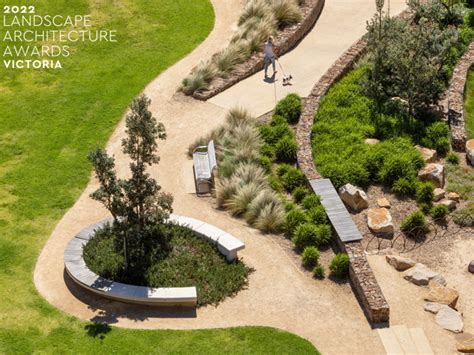Madison Bell Tress, renowned for her exceptional talent in landscape architecture, has left an indelible mark on the industry. Her innovative designs and unwavering passion for sustainability have shaped and inspired countless landscapes worldwide.

A Trailblazing Career
Born in 1960, Tress embarked on her architectural journey with a Bachelor of Landscape Architecture from the University of California, Berkeley. Her early works showcased her exceptional eye for detail and her ability to create spaces that seamlessly integrated with their natural surroundings. Over the years, Tress has garnered numerous accolades, including the prestigious American Society of Landscape Architects (ASLA) Medal in 2009.
Sustainable by Design
Tress is a pioneer in sustainable landscape architecture, firmly believing that buildings and landscapes should exist in harmony with the environment. Her designs incorporate native plants, water-efficient irrigation systems, and renewable energy sources, reducing the ecological footprint of her creations. According to the United Nations Environment Programme (UNEP), “nearly 40% of global carbon emissions come from the building and construction industry.” Tress’s sustainable approach contributes to the reduction of these emissions, making her a leader in the fight against climate change.
Bridging Art and Science
Tress’s work transcends traditional boundaries, combining artistic vision with scientific expertise. Her designs are not merely aesthetically pleasing; they are also functional, resilient, and responsive to the unique challenges of each site. She collaborates closely with ecologists, engineers, and architects, ensuring that her landscapes are both beautiful and environmentally sound.
Notable Projects
Tress’s portfolio boasts a diverse range of projects that reflect her versatility and the scope of her talents.
Children’s Healing Garden, St. Louis Children’s Hospital, Missouri
This garden provides a sanctuary for young patients and their families, offering a respite from the hospital environment. The design features a vibrant array of plants, water elements, and interactive play spaces, creating a therapeutic and uplifting atmosphere.
The Presidio Tunnel Tops, San Francisco, California
Covering over 14 acres, this ambitious project transformed a former military base into a thriving urban park. Tress’s design incorporates native species, panoramic views of the Golden Gate Bridge, and accessible trails, connecting the park to the surrounding community.
Artful Embankment, Madison, Wisconsin
This riverfront park incorporates functional and sustainable elements, including a floodable lawn that doubles as a reservoir during heavy rains. The design also features a terraced amphitheater, a kayak launch, and native plantings that support local wildlife.
Common Mistakes to Avoid
Tress emphasizes the importance of avoiding common pitfalls in landscape architecture, such as:
- Overplanting: Using too many plants in a small space can create a cluttered and visually overwhelming effect.
- Negating microclimates: Failing to consider the specific microclimates of a site can lead to plant failure and wasted resources.
- Ignoring maintenance: Designing landscapes without considering the ongoing maintenance requirements can result in costly and time-consuming upkeep.
Comparing Pros and Cons
Understanding the advantages and disadvantages of various landscape materials and techniques is crucial for informed decision-making.
| Material/Technique | Pros | Cons |
|---|---|---|
| Concrete | Durable, low maintenance, customizable | Thermal conductivity, high cost |
| Wood | Natural, renewable, aesthetically pleasing | Requires regular maintenance, susceptible to rot |
| Gravel | Permeable, low cost, low maintenance | Can be dusty, less visually appealing |
| Natural stone | Durable, attractive, unique | High cost, heavy, difficult to work with |
New Applications
Tress encourages the exploration of innovative applications in landscape architecture, coining the term “NatureTech” to describe the convergence of natural elements with technology. Potential applications include:
- Vertical gardens: These space-saving solutions provide greenery in urban areas and improve air quality.
- Biomimetic structures: Buildings and landscapes that mimic natural forms and processes, enhancing sustainability and resilience.
- Interactive landscapes: Digital technologies that allow users to personalize and interact with public spaces, promoting community engagement.
Key Figures
- 68% of Americans believe that parks and green spaces are important to their quality of life. (National Recreation and Park Association, 2021)
- $12.6 billion is the annual economic impact of urban forests in the United States. (U.S. Forest Service, 2019)
- 25% of the United States’ energy consumption is attributed to buildings. (U.S. Department of Energy, 2020)
Conclusion
Madison Bell Tress is a visionary leader in landscape architecture, whose work continues to inspire and shape the industry. Her unwavering commitment to sustainability, her ability to bridge art and science, and her innovative spirit make her a beacon of excellence in the field. As we face the challenges of climate change and urban growth, Tress’s designs offer a blueprint for creating livable, healthy, and beautiful landscapes that enhance our quality of life.
